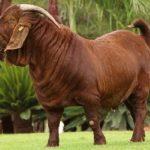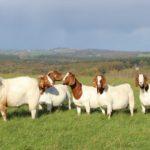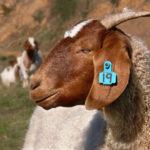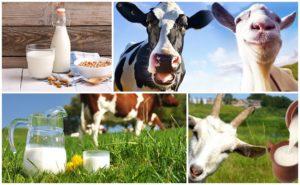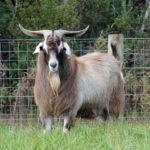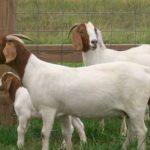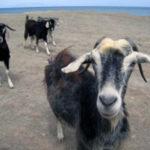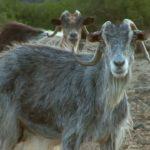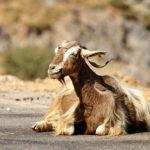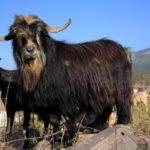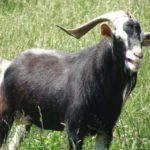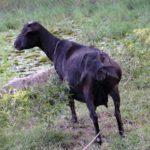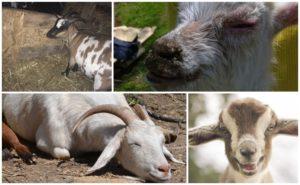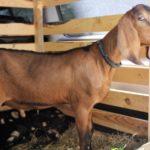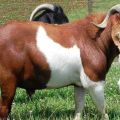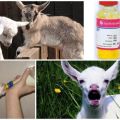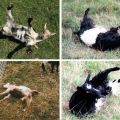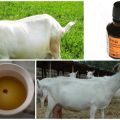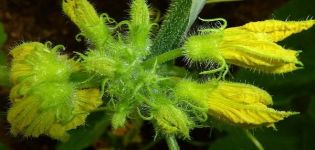Description and characteristics of the top 5 meat breeds of goats, the rules for their maintenance
Meat goats are raised to obtain dietary meat, which is not inferior in taste to veal. Pedigree animals are distinguished by their high weight, large / medium build. No special feed additives are required for rapid weight gain. A feature of goats is the use of a large amount of branch feed. In goat breeding, animals of mixed productivity are also used: meat and dairy, meat and fur.
General characteristics of meat breeds
Meat goats, in contrast to dairy, downy and woolly, are larger and more massive. The body of such goats has a barrel-shaped shape, a small, high udder. Goat meat is a dietary one: it is low in fat, but it is juicy and tender, does not have a specific taste.
Milk is fatty, up to 6%, but it is rarely eaten, as it is used to feed newborn kids. The lactation period is short. The skin is low-bristled, rough. Animals are distinguished by intelligence and independence.
Most popular breeds
Meat breeds of goats are valued and bred in many countries of Europe, North America, Africa, Asia.
Boer
One of the most popular breeds developed in South Africa in the 19th century.
Outwardly, the animals are distinguished by a strong physique with developed muscles, wide horns of medium length, hanging ears. Shorthaired, body color is white, neck and head are dark brown.
A newborn kid weighing 4 kilograms after 3 months has about 40 kilograms. Mating can be allowed at 5 months. Boer goats are friendly to other animals. They can be kept in the same room and on the pasture with other ungulates.

Breeding problems:
- insufficient lactation for feeding kids;
- features of the content in the winter.
After lambing, Boer goats for a short time give no more than 2 liters of milk per day, which is not enough for two kids. The kids are fed with cow's milk or milk mixture.
Animals tolerate temperatures up to +5 degrees, but they start to get sick if the air humidity exceeds 80%. In winter, the floor in the goat's house should be covered with a thick layer of sawdust so that the goats do not catch cold.
Kiko
A breed developed in New Zealand in the 80s of the last century with special qualities of meat (no fat). Animals have strong bones and well-developed muscles. The head is dry, with drooping ears. Goats differ from goats in size, weight (50 versus 70/90 kilograms), as well as horns (in goats they are much longer and thicker) and lack of a beard.
The amount of milk from females is sufficient to feed two / three cubs.
Greek
Greek goats have a medium-sized body with thin, high legs with strong hooves. The head is dry, elongated, on a long neck, with drooping ears. The horns are straight, parallel to the back. The coat on the thighs and sides is thicker and longer.
Single color or multi-color:
- white;
- gray;
- black;
- white and gray;
- gray-black;
- white-black-gray.
The meat is high in fat, juicy and tender. During the lactation period, 100 liters of milk can be obtained from animals, which is in great demand. The national Greek dish (feta cheese) is prepared from it.
Animals are raised on free grazing.
Black Anatolian
The breed has a genetic relationship with the Syrian breeds. Anatolian blacks are mainly bred in the mountainous regions of Turkey, the Mediterranean. Lean meat and high-quality skins with long black fur and thick undercoat are obtained from animals. The weight of males reaches 80 kilograms, goats - up to 50 kilograms.
External signs of the breed:
- the average size;
- long and wide ears;
- wide spiral horns and beard in males;
- long and thick hair.
Long hair gets tangled, gets dirty, and an unpleasant odor begins to emanate from animals.
Nubian
Breed of meat and dairy direction. The goats can weigh up to 175 kilograms (the female has 55 kilograms). Goats after lambing for 13 months of lactation give from 800 to 1000 liters of milk with a fat content of up to 4.5%. Nubian goats are hornless, with long, drooping ears.
Nubian goats are only raised on private farms.
Basic rules for keeping and breeding
Goats need free range in the pasture or in a spacious pen. Single individuals can be left to graze on a leash, providing a secure attachment that the goat cannot chew.
Animals of all ages should be provided with constant access to fresh water at grazing and indoors. The food base for goats consists of hay, grain additives, twigs, dry leaves, bark. Grazing goats choose their own diet. When kept in a pen and a house, goats should receive mainly hay, with the obligatory content of alfalfa and red clover. Feeders and drinkers must be clean, otherwise goats will not eat food and drink water.

For pregnant goats, arrange a separate, secluded place with a warm bedding. Most domestic ungulates catch colds from cold flooring. For the winter, it should be covered with a layer of sawdust or straw.
Required Supplements:
- iodized salt (often);
- containing copper (2 times a year);
- selenium (once a year);
- yogurt (once a week).
Deworming is required annually.
Benefits of beef goat breeding in Russia
In terms of the cost of feed, care, maintenance, taking into account the profit from meat products, raising goats is more efficient in comparison with other domestic animals.
